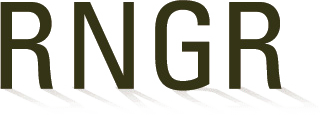
Acer (glabrum)
|
jtrindle USDA NRCS - Corvallis Plant Materials Center 3415 NE Granger Ave Corvallis, Oregon 58413 (541)757-4812 http://plant-materials.nrcs.usda.gov/orpmc |
|
| Family Scientific Name: | Aceraceae | ||
|---|---|---|---|
| Family Common Name: | Maple family | ||
| Scientific Name: | Acer glabrum Torr douglasii (Hook.) Dippel | ||
| Common Synonym: | Acer glabrum Torr. | ||
| Common Name: | Douglas's Maple | ||
| Species Code: | ACGLD4 | ||
| Ecotype: | This accession was collected along highway 123 on the east side of Mount Rainier National Park at 3900 to 4,000 ft elevation | ||
| General Distribution: | Northwestern coast and intermountain states; east to Montana and Wyoming; northern Nevada and California. | ||
| Propagation Goal: | plants | ||
| Propagation Method: | seed | ||
| ProductType: | Container (plug) | ||
| Stock Type: | 1-gallon container | ||
| Time To Grow: | 0 | ||
| Target Specifications: | One or more well developed main stems with lateral shoots; fibrous, well-branched root systems | ||
| Propagule Collection: | Samaras were hand-stripped from trees in early September and placed directly into moist peat moss. | ||
| Propagule Processing: | No seed processing was done; about 500 samaras were collected and placed into stratification | ||
| Pre-Planting Treatments: | Samaras were stored in moist paper toweling in a cooler at 36 to 40 deg F for 3 months. In January they were warm-stratified in moist peat in a dark closet at room temperature until June (6 months "warm"); then cold stratified until February (6 months cold strat). | ||
| Growing Area Preparation/ Annual Practices for Perennial Crops: |
Stratified samaras were surface-sown onto flats containing a soil-less greenhouse mix (Sunshine #1; Fisons' Horticultural Products) And placed outdoors in lathhouse at Corvallis in February. | ||
| Establishment Phase: | Germination was very slow; 18 seedlings were produced by the end of April and were at the 1st true leaf stage. Powdery mildew and leaf spot were noted and treated with Benlate and Kocide at labeled rates. Any dead or decaying foliagewas removed immediately. | ||
| Length of Establishment Phase: | 8 to 12 weeks | ||
| Active Growth Phase: | Seedlings were transplanted directly into ribbed 1-gallon containers in a mix of Sunshine #1 with added perlite to improve drainage, and Micromax trace element nutrients at the beginning of June and placed outdoors in the shadehouse (40% shade cloth) with drip irrigation over the summer. Fertilization was provided by one application of Slow-release Osmocote (SierraBlen Mfg). Shoots of some taller plants were trimmed back in early July to encourage lateral branching. | ||
| Length of Active Growth Phase: | June to August | ||
| Hardening Phase: | Fertilization is discontinued at the end of July, and intervals between irrigations are increased to encourage vegetative maturity. Plants remain outdoors with shadecloth removed in October to adapt to cooler temperatures; and moved to an unheated poly greenhouse during the wettest winter months. | ||
| Length of Hardening Phase: | August to October | ||
| Harvesting, Storage and Shipping: | Plants were overwintered outdoors in an unheated poly greenhouse at Corvallis. Containerized plants can be shipped in early spring or fall in cool weather or in refrigerated van. Cool conditions are especially important for early fall shipping to avoid stimulating regrowth and bud break. | ||
| Length of Storage: | see above | ||
| Other Comments: | . If retained in pots for additional years; either repotting to larger containers and or balanced root / shoot pruning is needed to avoid becoming potbound. Few insect or disease problems were noted once plants had established. COMMENTS Due to delays in construction; plants were held over for additional years and treated as stated for the 1st year of establishment except that no additional micronutrients were applied.Plants were root- and top-pruned in early June to maintain size and avoid spiraling, pot-bound roots. | ||
| References: |
Flora of the Pacific Northwest, C. L. Hitchcock and A. Cronquist, University of Washington Press, 1973. USDA, NRCS. 2001. The PLANTS Database, Version 3.1 (http://plants.usda.gov). National Plant Data Center, Baton Rouge, LA 70874-4490 USA. Kruckeberg, Aurthur R. 1982. Gardening With Native Plants of the Pacific Northwest: An Illustrated Guide. Seattle: Univ. of Washington Press. |
||
Citation:
Flessner, Theresa R; Trindle, Joan D.C.. 2008. Propagation protocol for production of Container (plug) Acer glabrum Torr plants 1-gallon container; USDA NRCS - Corvallis Plant Materials Center Corvallis, Oregon. In: Native Plant Network. URL: https://NativePlantNetwork.org (accessed 2025/10/21). US Department of Agriculture, Forest Service, National Center for Reforestation, Nurseries, and Genetic Resources.



